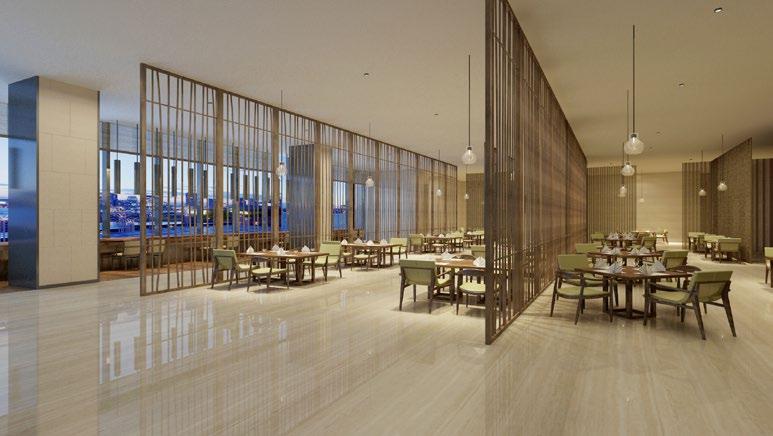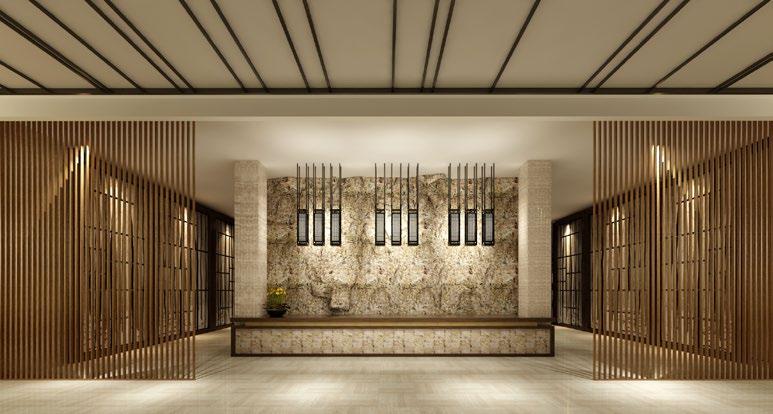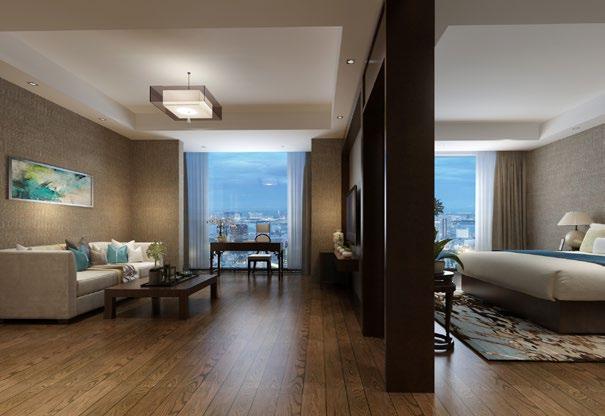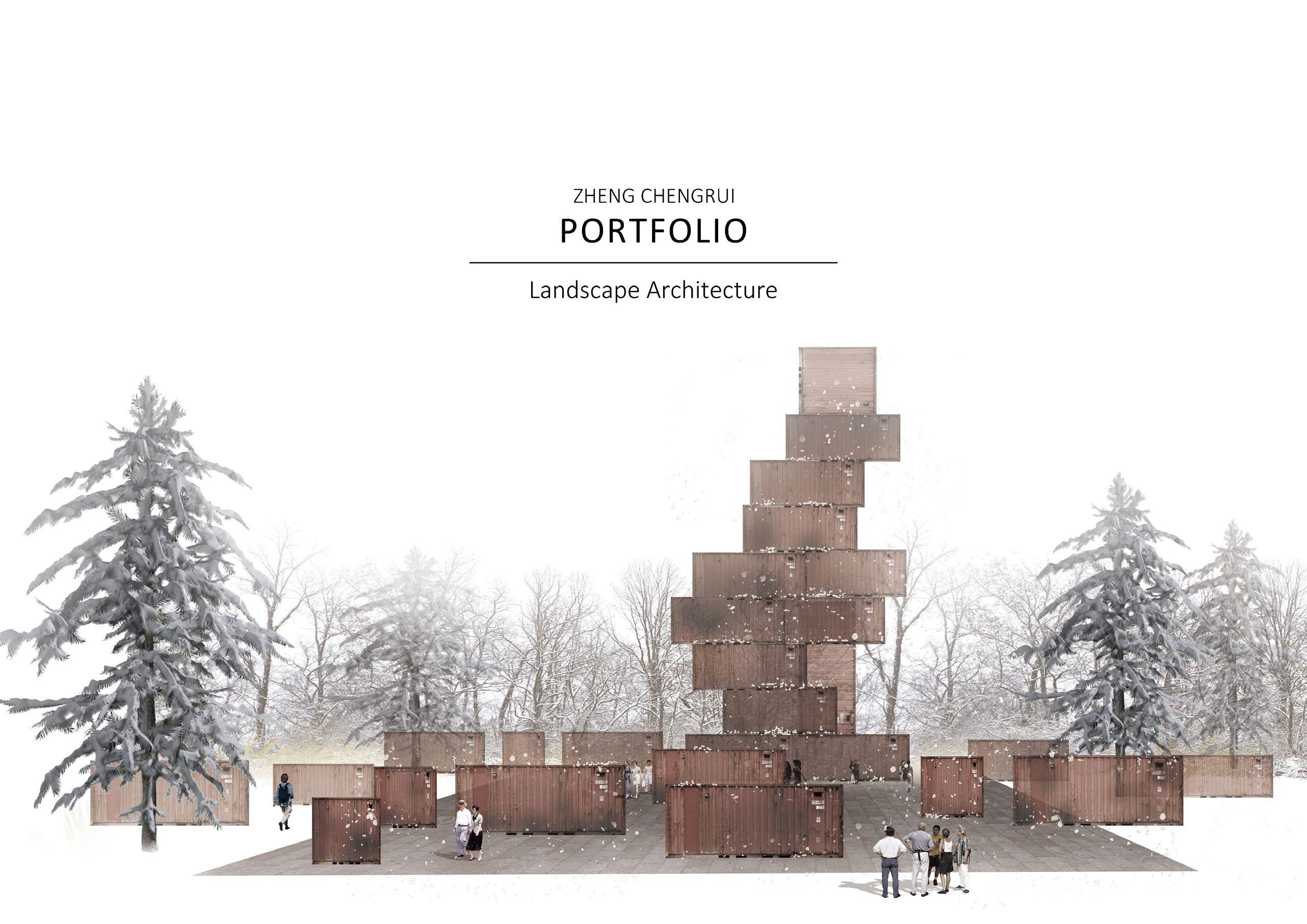
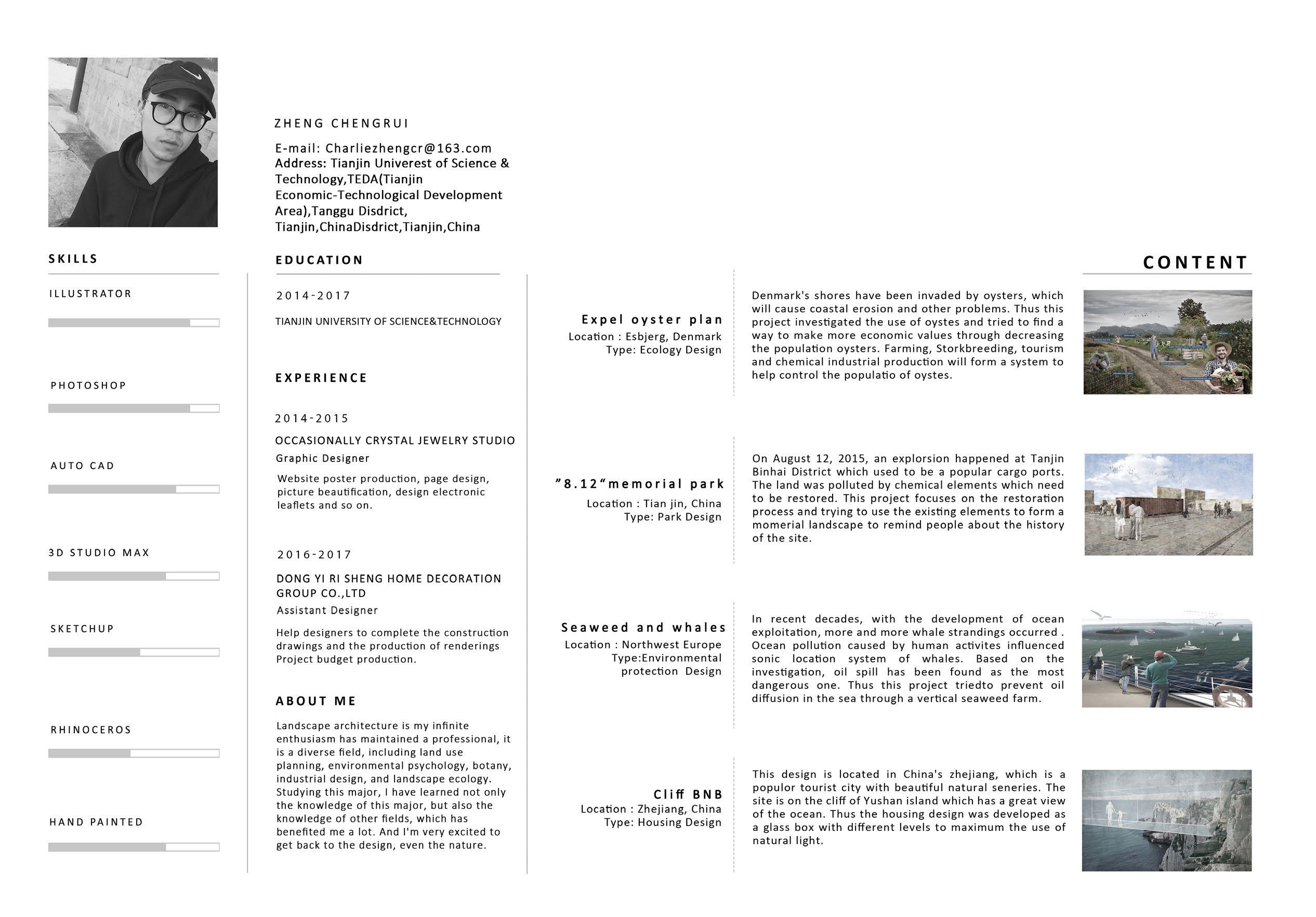

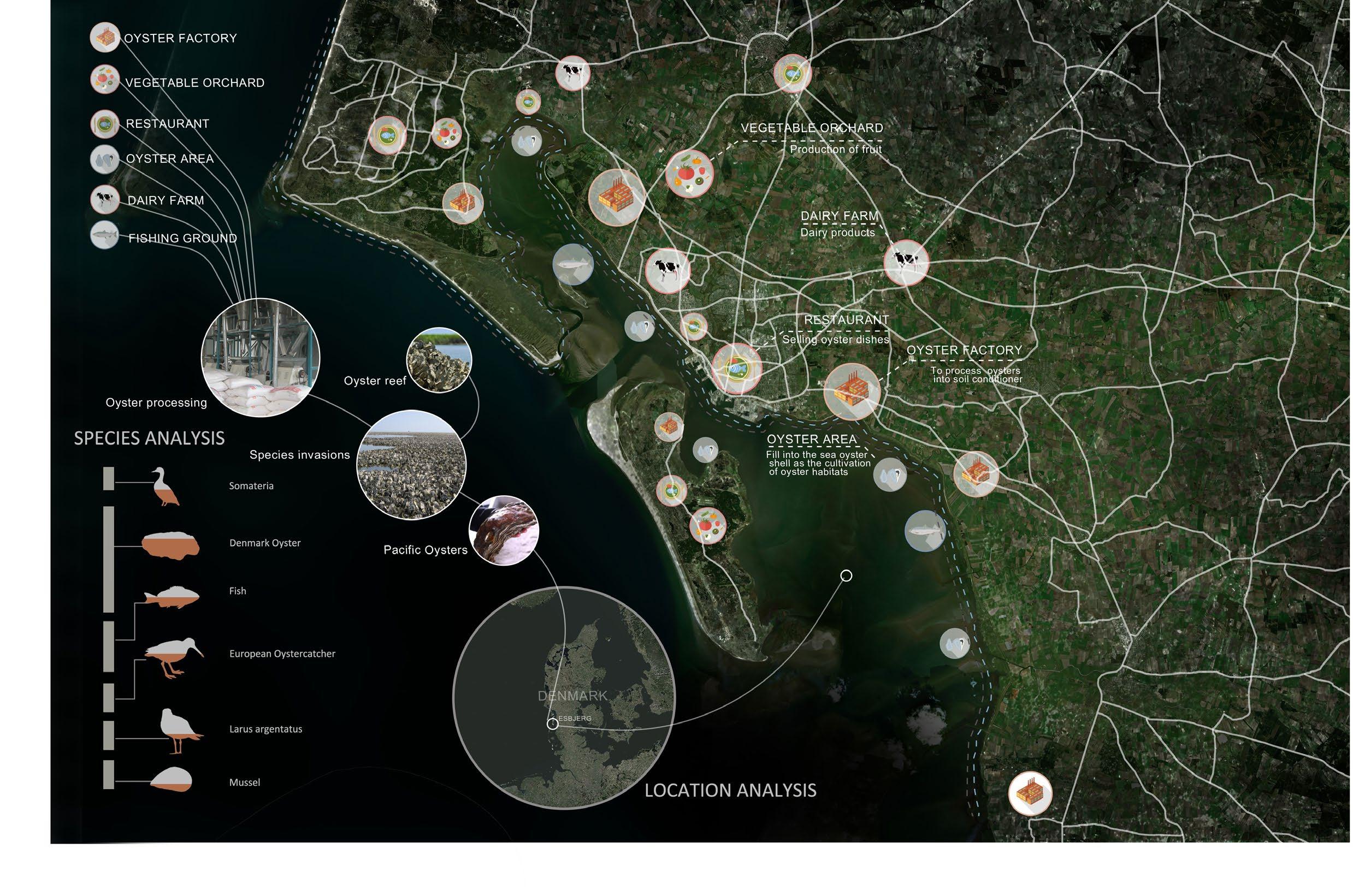

SCENE ANALYSIS OF OYSTERS

Oysters are transported from farming area in the sea to the oyster factory and processed into soil conditioner.
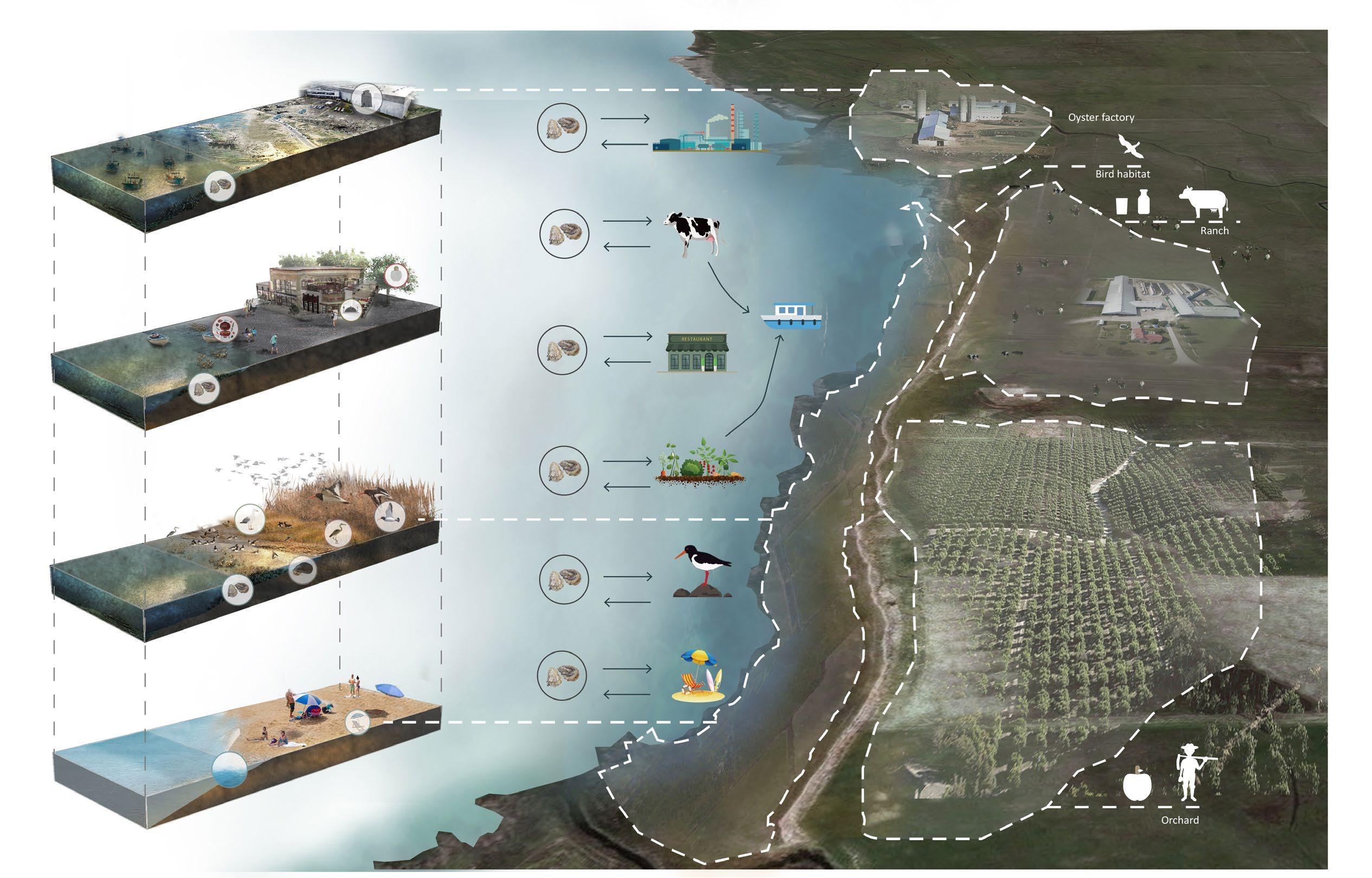
Restaurants are built along the seashores are good places for tourists to try fresh oysters.
Oystercatchers live on fresh oysters, in order to attract more seabirds to make the eco-system stable, oystercatcher habitats are established for both birds and human.
The rapid growth of oyster population caused coast erosion, which resulted in decreasing the amount of tourists. This project aims at rebuilding a lively coast line.
The soil conditioner is processed by oysters which makes the soil healthier and yield by at least 30 per cent. Organic agriculture products can be exported which are quite popular all over the word, such as milk and fruits.

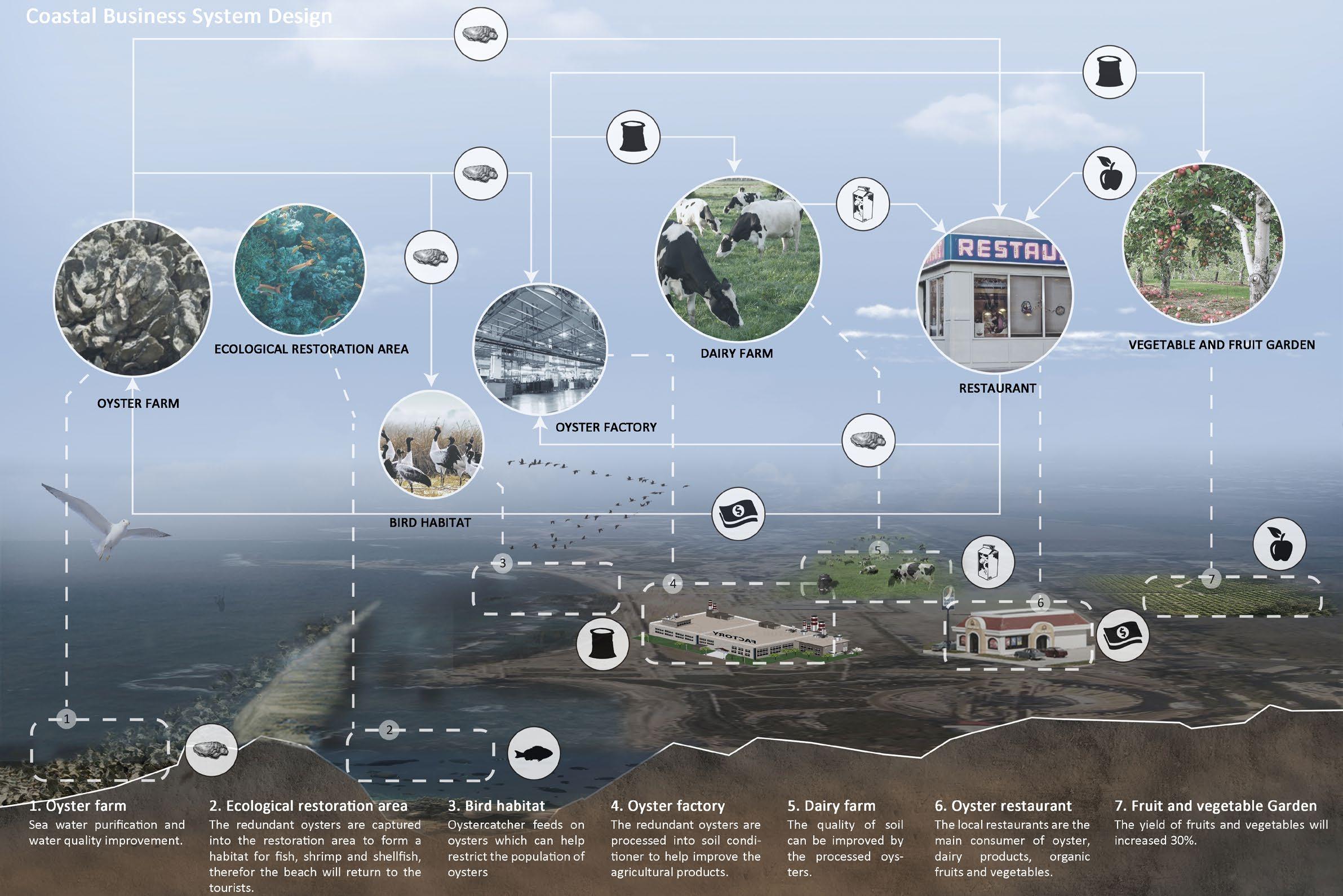
Fruit and vegetable farms
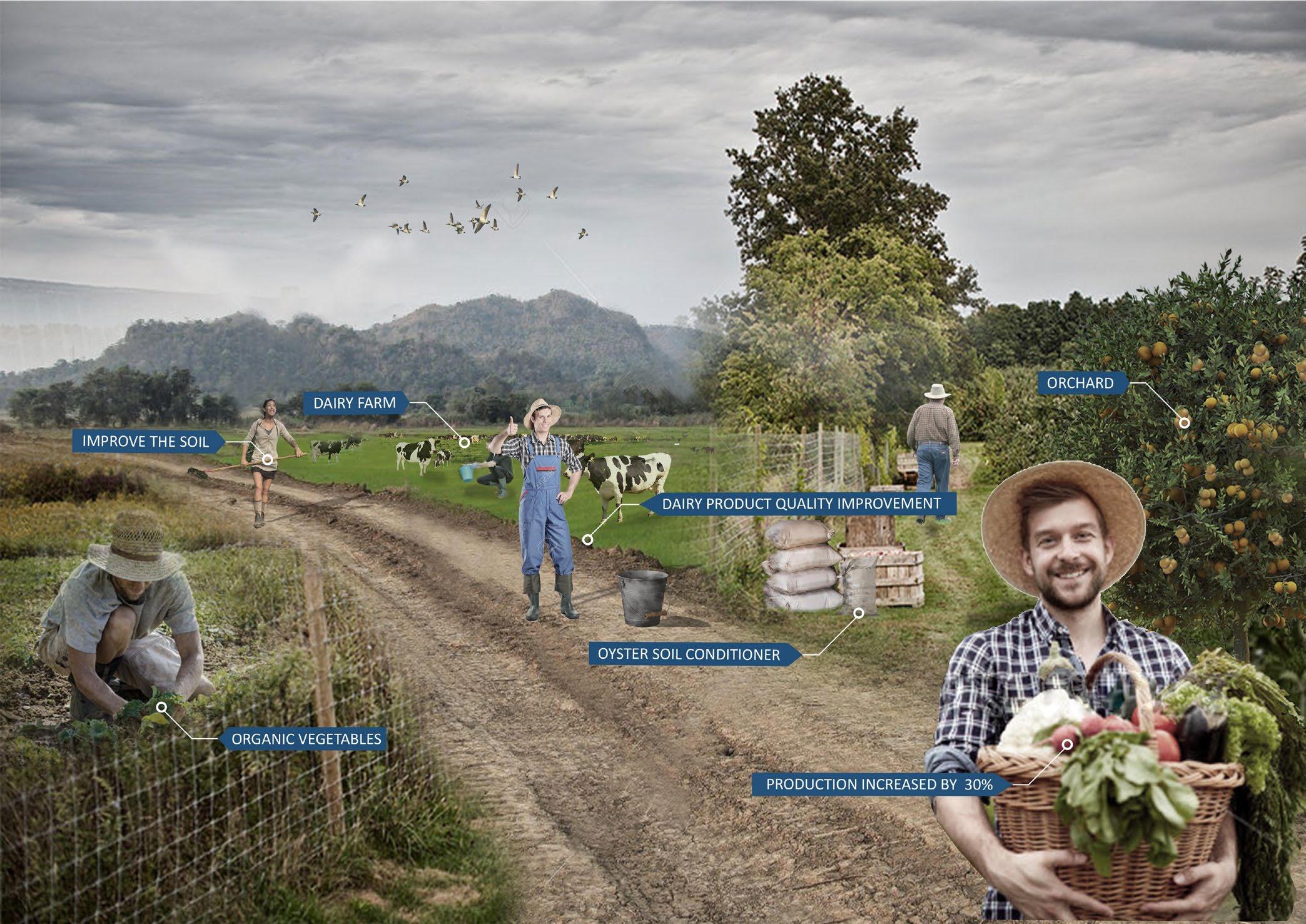
After the soil conditioner has been processed in the farm, the soil quality is obviously improved. Therefore, the yield of crops will be higher and the quality of the milk will be improved. The use of this natural soil conditioner reduces the use of chemical fertilizers and promotes the development of local organic agriculture.

Beach activities

Coastal area will be developed as holiday beaches with diverse activities. Tourists can watch birds, roast oysters, sail boats and swim along the restored beach.Birds are feed on oysters, which can help control the oyster spread. Additionally, Tourists can pick up oysters at the beach and bake them directly.
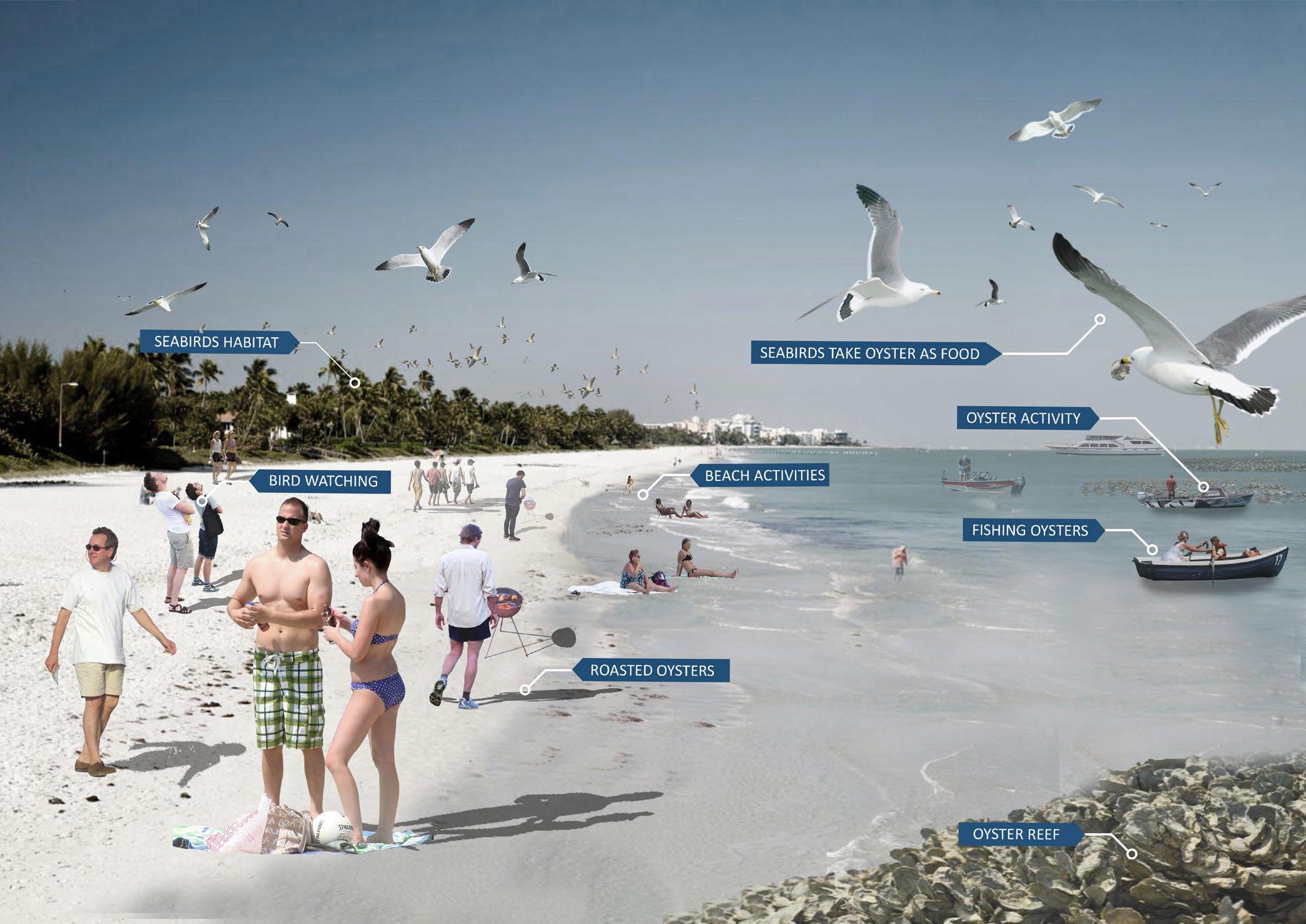
Rescue Process
In the Ming Dynasty, Tianjin port was an important business center for salt and agricultural products.
On August 21 and 23, 1986, Deng Xiaoping, the director of the Central Advisory Commission inspected the port of Tianjin.
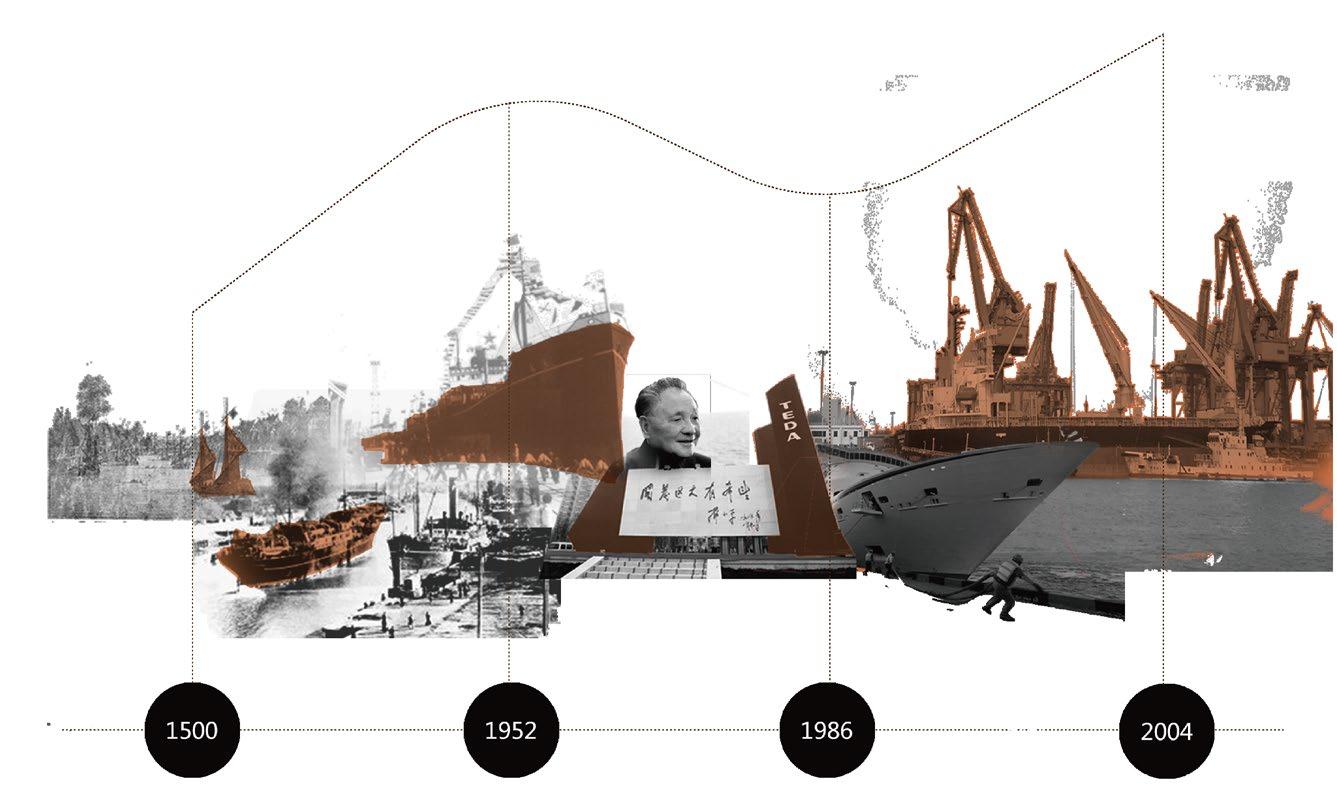
Industrial Distribution
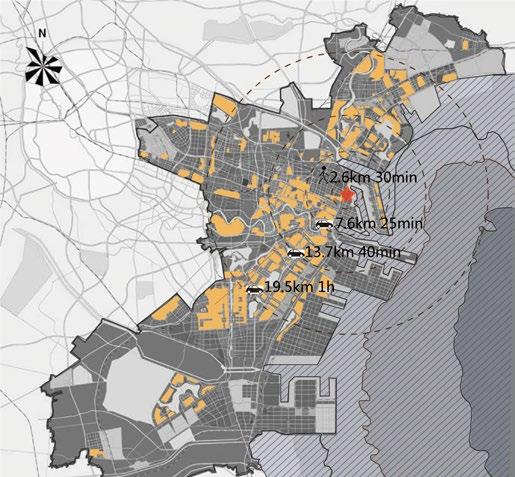
The industrial area is large, the distribution is wide, adjacent to the residential residence nearby.
In October 17, 1952, the opening ceremony of the port of Tanggu in Xingang was held. The first 10000 ton ship sailed alongside the pier which made the Tianjin port as a harbor.
In 2002, the cargo handling capacity of Tianjin port reached 1.29 tons, and the container handling capacity was 2 million 408 thousand TEUs. This indicated that Tianjin port became the largest port in northern China.
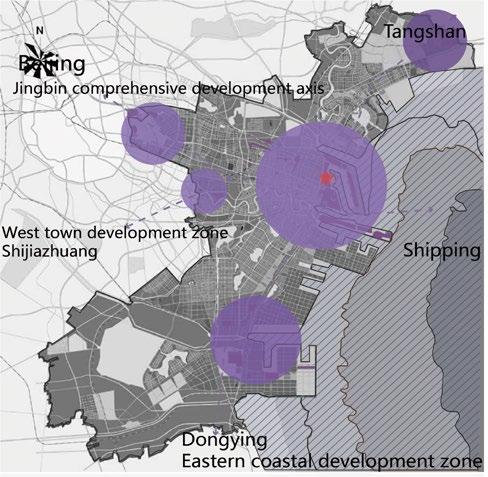
Distribution of Logistics Center
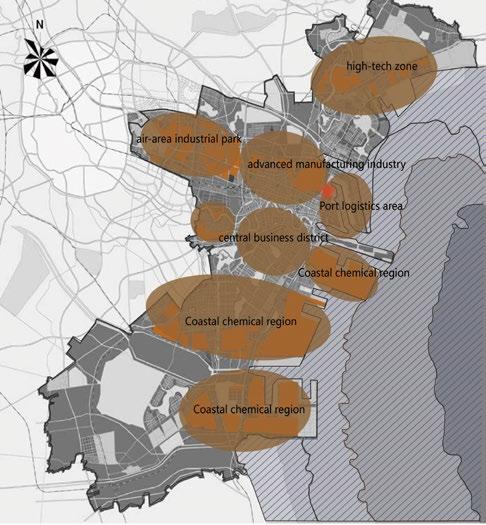
The logistics area is closely linked to the industrial area. The explosion site is in the logistics area. The explosive material is a toxic chemical.
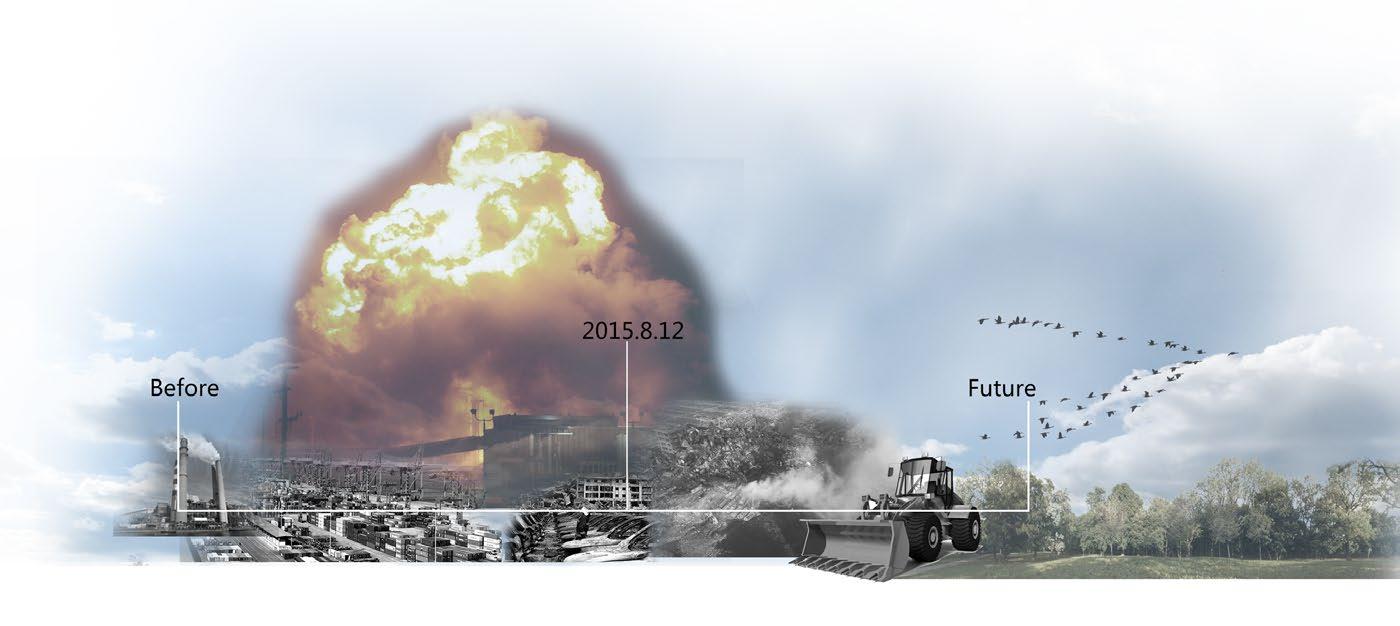
The main green space is located at the edge of Binhai New Development Area to provide public space for the residents nearby.
Green Distribution Habitat Distribution
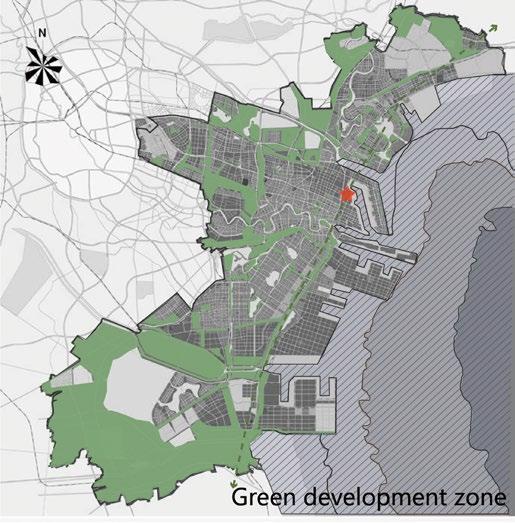
The explosion was so large that the explosion affected a large number of people.

Design Concept
The original site is an industrial storage land which became a useless area since the explosion happened. Deal to the unforgettable accident, the site was polluted by industrial elements. It is necessary to clean the site before rebuilt projects. Thus, natural restoration process will be used in the site to rebuild an ecological area. Additionally, the accident should be remembered. Broken cargos are used as a design element to remind people that overdevelopment will cause problems.
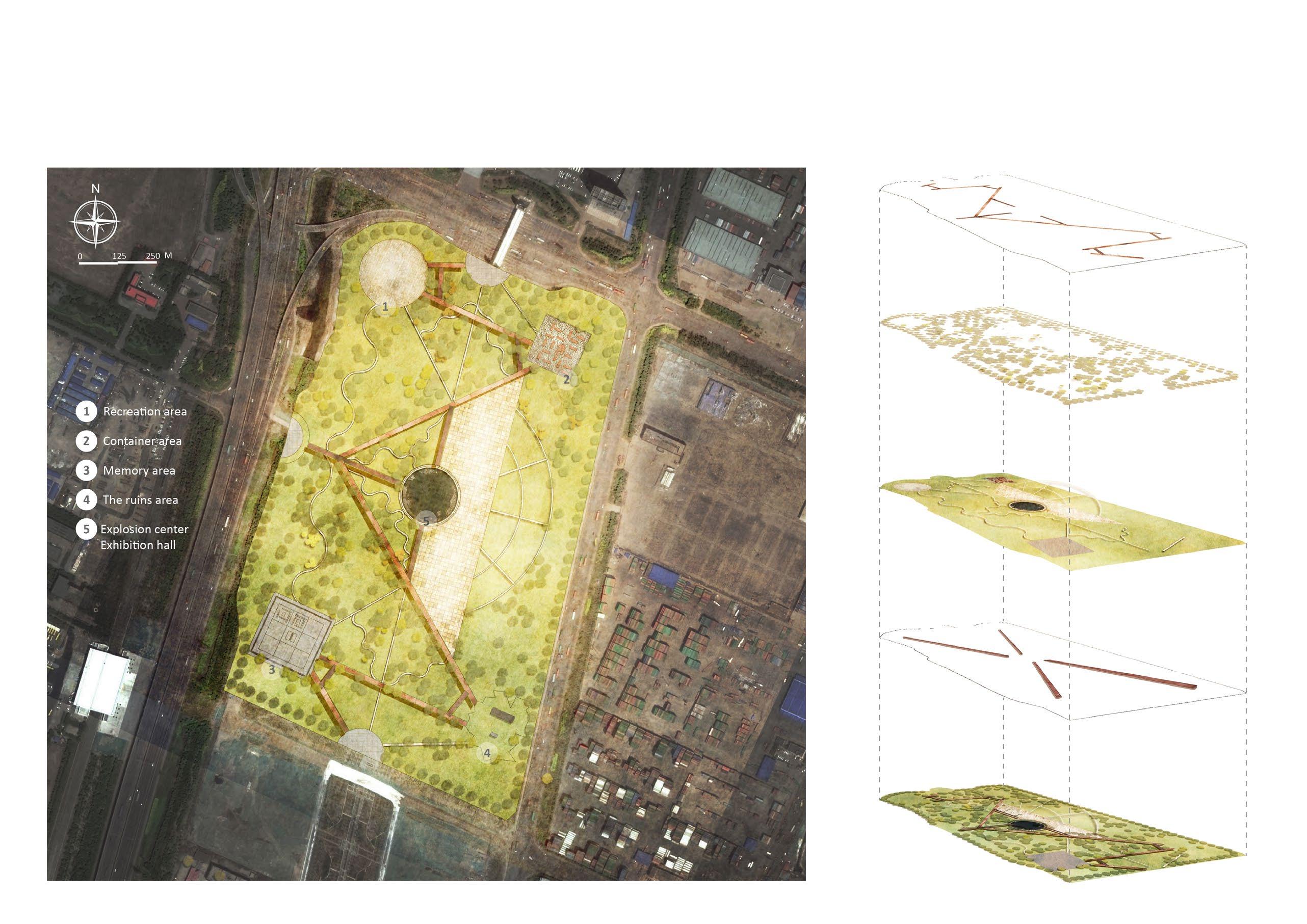
Frame Analysis
The road system is divided into three layers, the overpass, the ground, and the underpass. Visitors will have different feels when walking along different trails.

At the entrance of the memorial area, containers with different sizes are designed to form a monument for the explosion event.

Entering from the container entrance, visitors will be led into the underground museum. Through the transparent French window, dilapidated containers, damaged fire engines and the heavily polluted land can be seen in the courtyard.

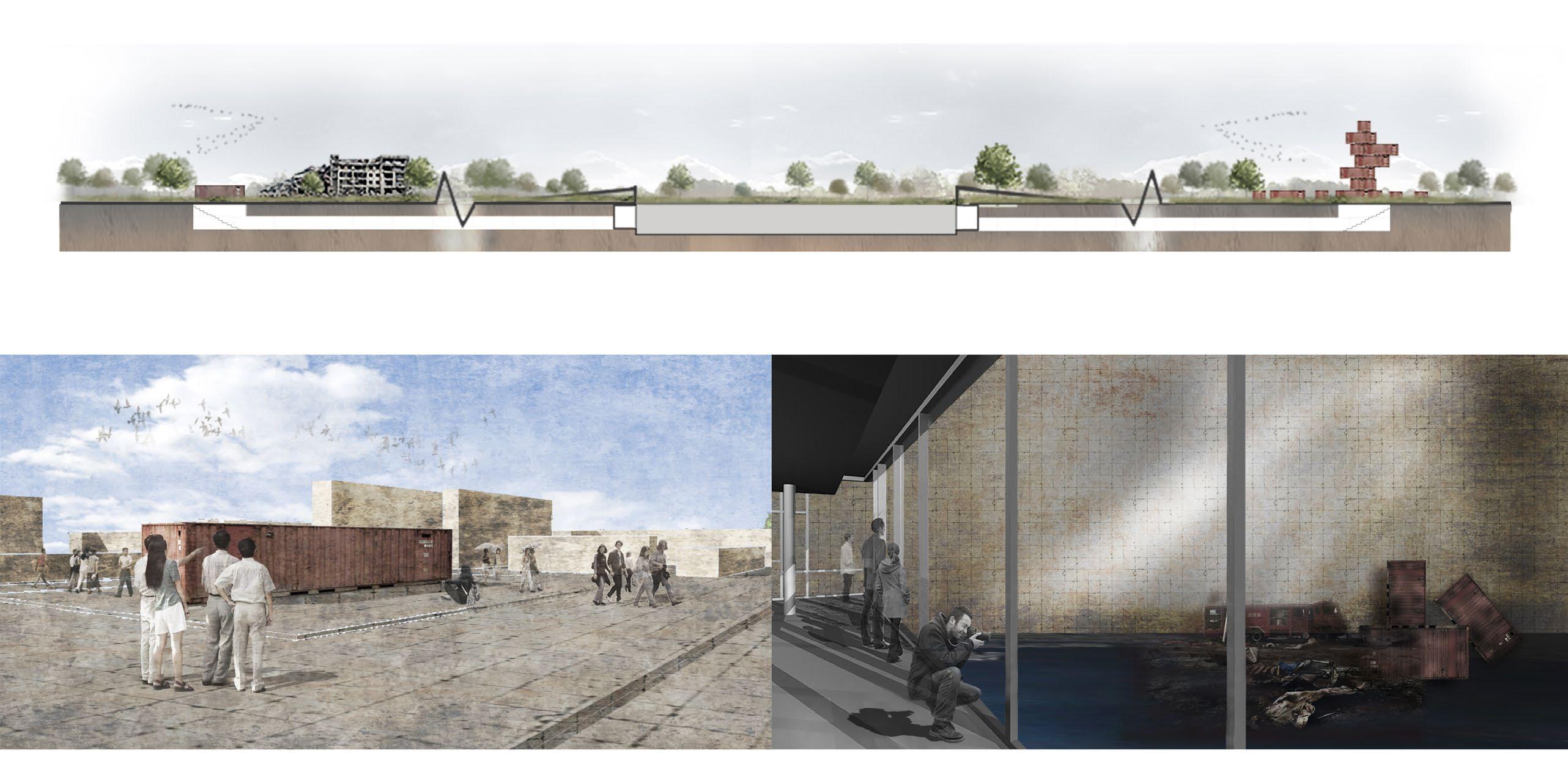
Land Restoration Process Planting Analysis
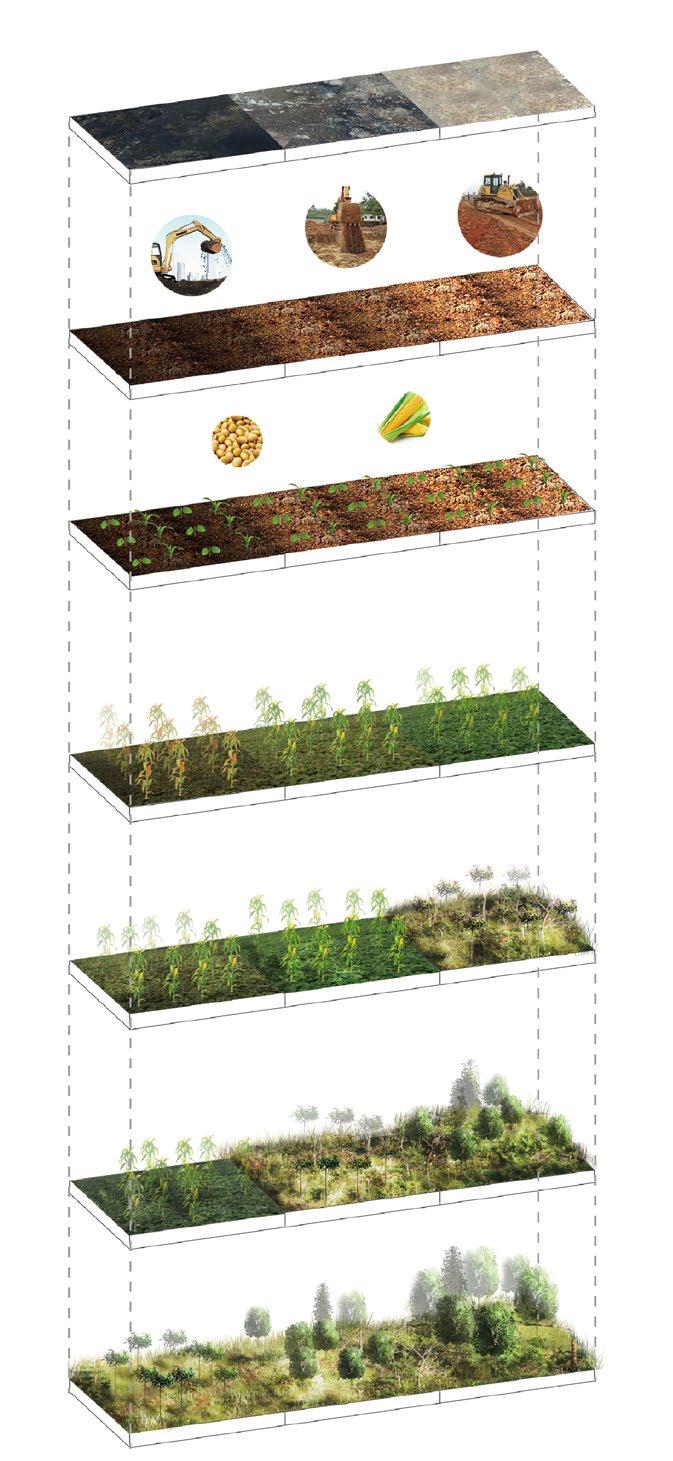
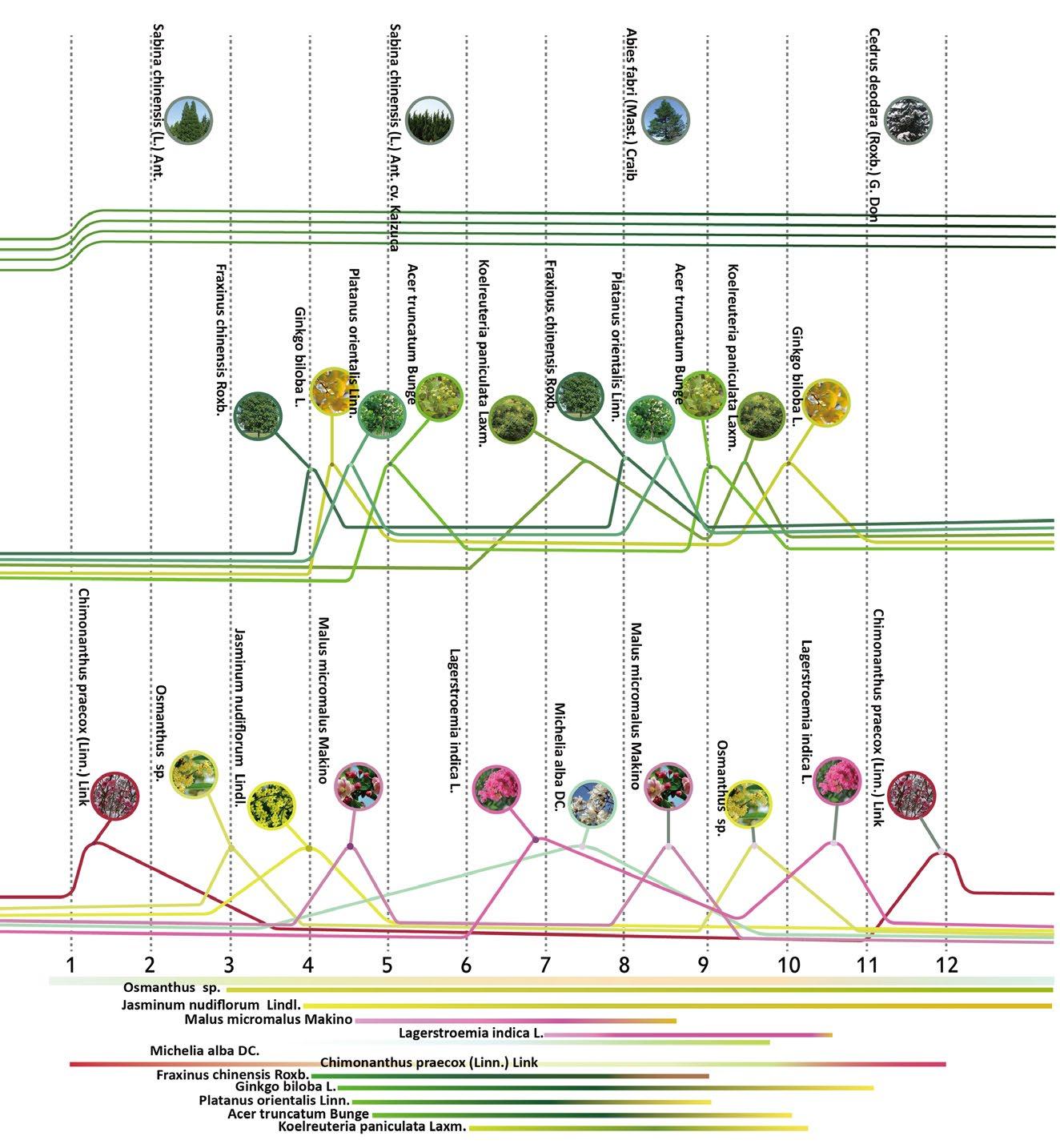

After investigation, 320 tons of toxic substances were found in the explosion site, which have unpredictable impacts on the environment. The restoration process is divided into two main parts. Human intervention will replace the most damaged soil with nutritive topsoil. Then natural process will use soybeans and corns to remove cyanide. Additionally, local plants will be planted after restoration process to form a natural area with highly ecological effects.
1 year
The site was contaminated by the explosion with varying degrees.
2 years
Topsoil will be refilled by healthy soil.
Evergreen species are designed to be the main plants in order to form the memorial atmosphere, such as cedar, cypress, Lobster, and etc.Deciduous species are mixed with evergreen species to form seasonal and various landscape, such as flowers and ornamental fruit plants.
3 years
Beans and corns will be used to absorb chemical elements in the soil by natural process.
4 years
Corns and soybeans are grown for two years to clean up pollutants naturally.
5 years
After natural restoration process, trees will be planted to form a better place for animals and human beings.
6 years
New habitats will be built with local plants.
10 years
The new ecosystem will become stable after the whole restoration process.
Conifers will be used to represent people who died in the explosion. In order to form different viewer in different season, shrubs and flowers will be planted under big evergreen trees.

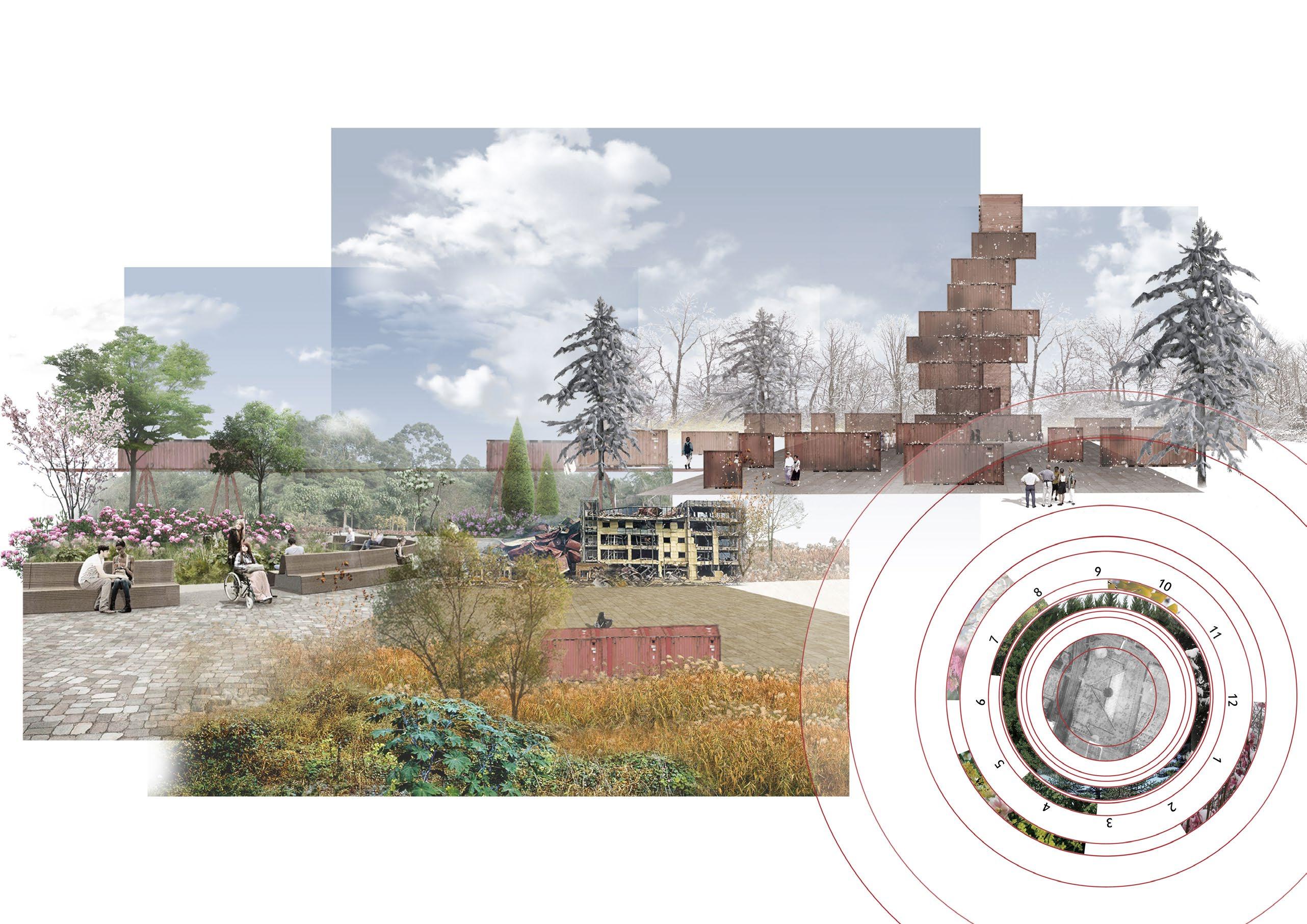
SEAWEED AND WHALES
An ecological way to protect ocean 11
The Harms OF Marine Oil Pollution
Crude oil contains chemical pollutants which influence water quality
The pollutants kill some sensitive plankton and fish, causing changes of phytoplankton
Birds' feathers are covered by oil which caused they water and heat loss. When cold water soaks through the skin, birds will die from hypothermia.
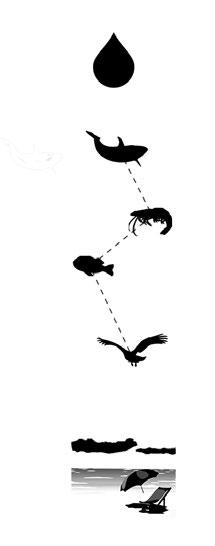
Water quality affects the seaside tourism.
Causes of Oil Pollution
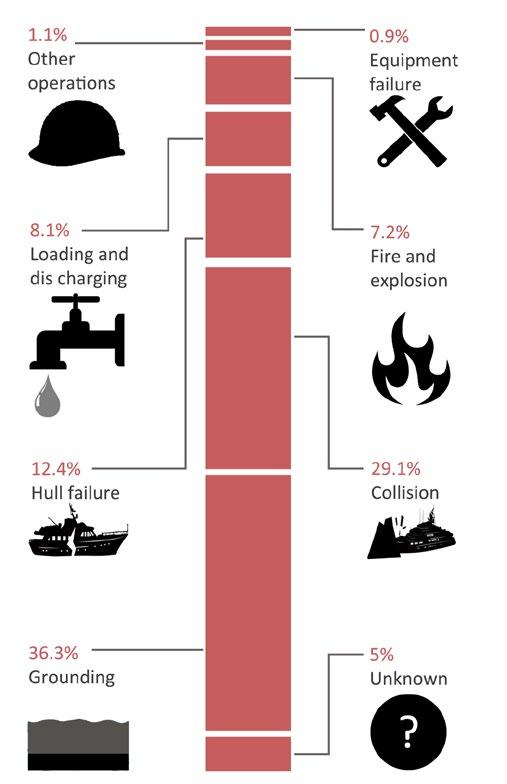

Volume of Oil Spilled per Decade
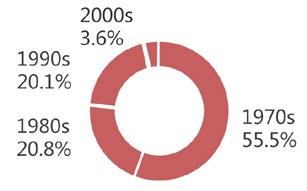

Because of the lack of light in the sea, whales cause severe deterioration of vision. Echolocation is an important skill for whales to judge their surroundings, and if the echolocation is broken by a physical illness or sea water pollution, the whales may be stranded.
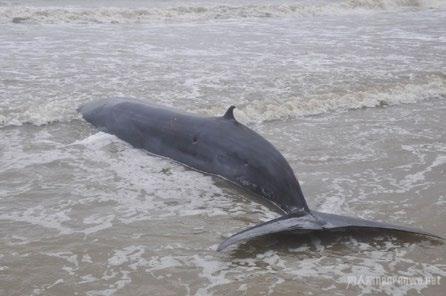
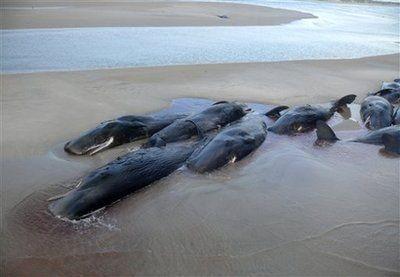
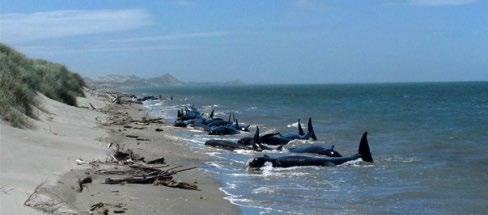
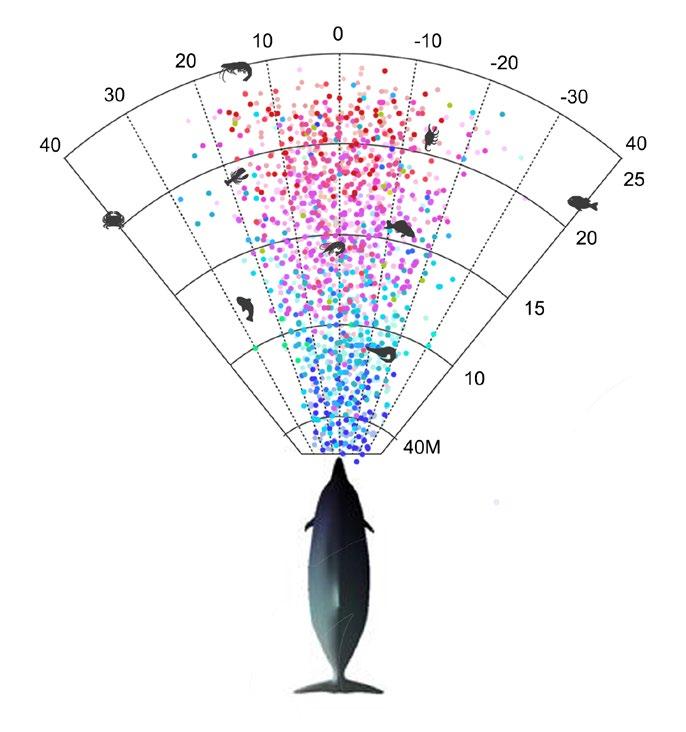
FOOD CHAIN
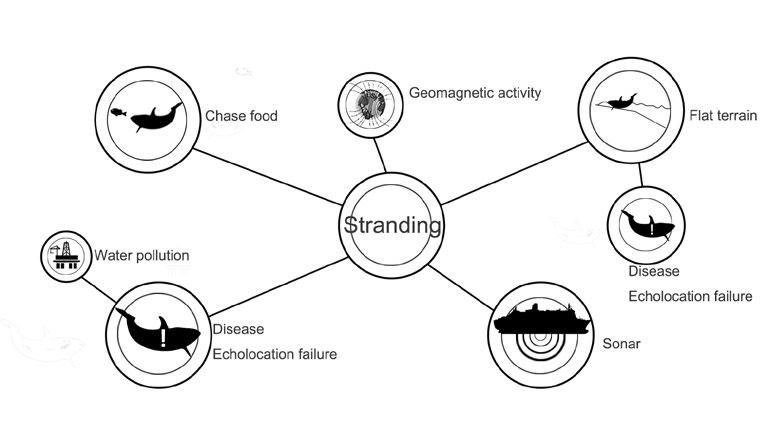
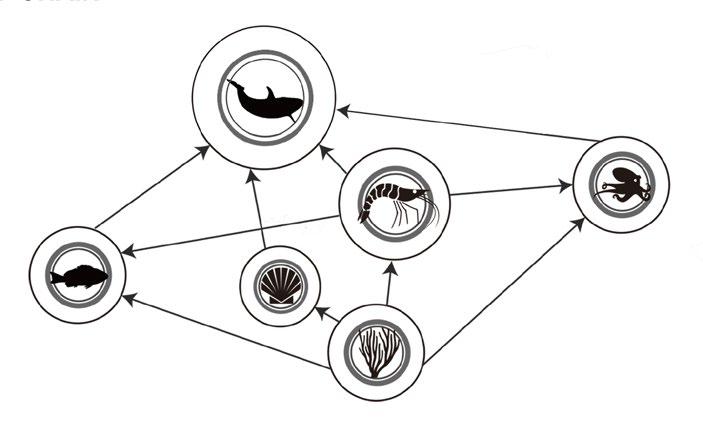
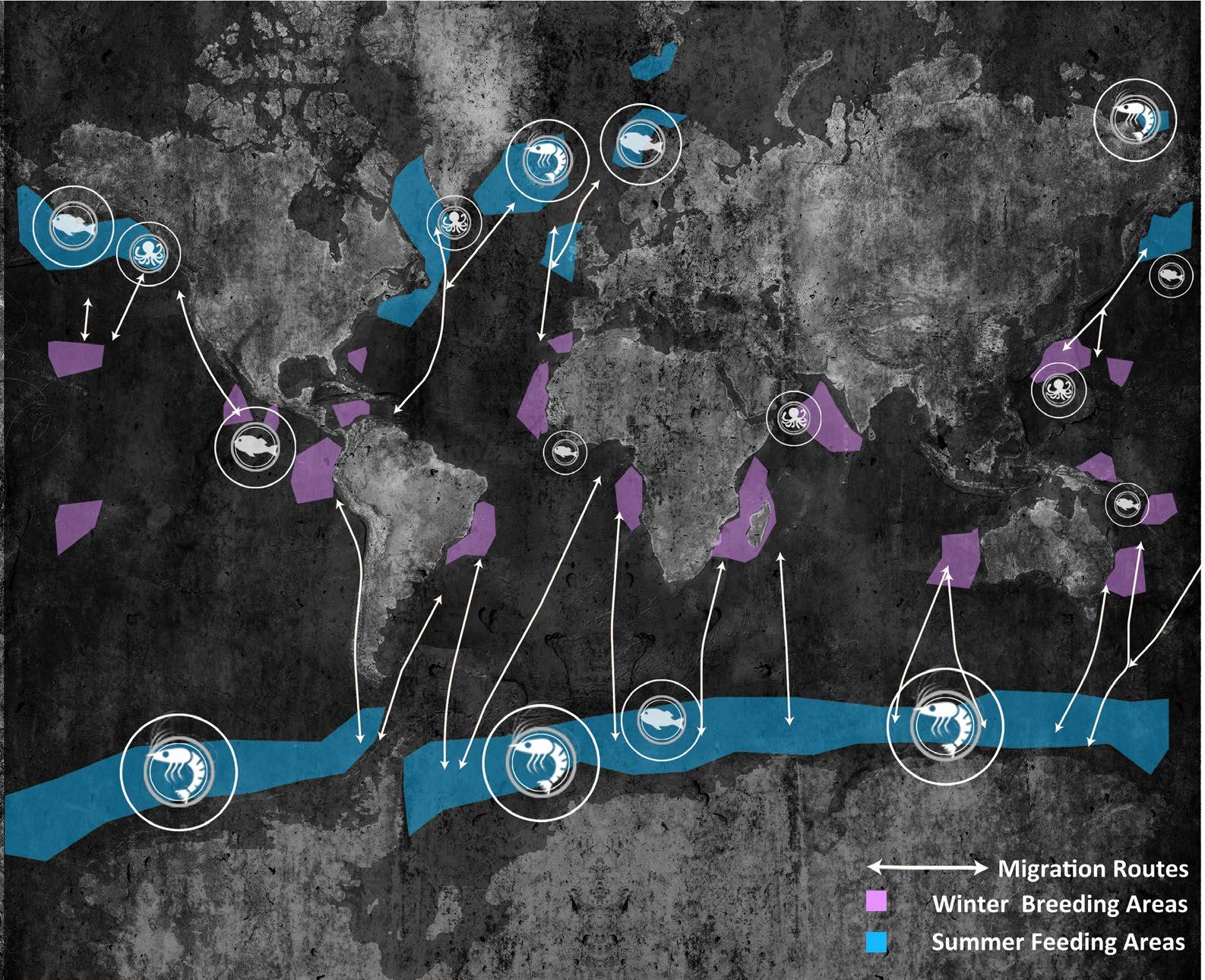
STRANDED CAUSE

DESIGN CONCEPT

Oil pollution can be divided into three levels. Pollution source, such as drilling platforms, could be the first level, which will use physical treatment methods. The second level will use chemical treatment methods to neutralize harmful elements. The third level works with biological ecosystems to purify the residue of the pollutants and rebuild a stable eco-system.
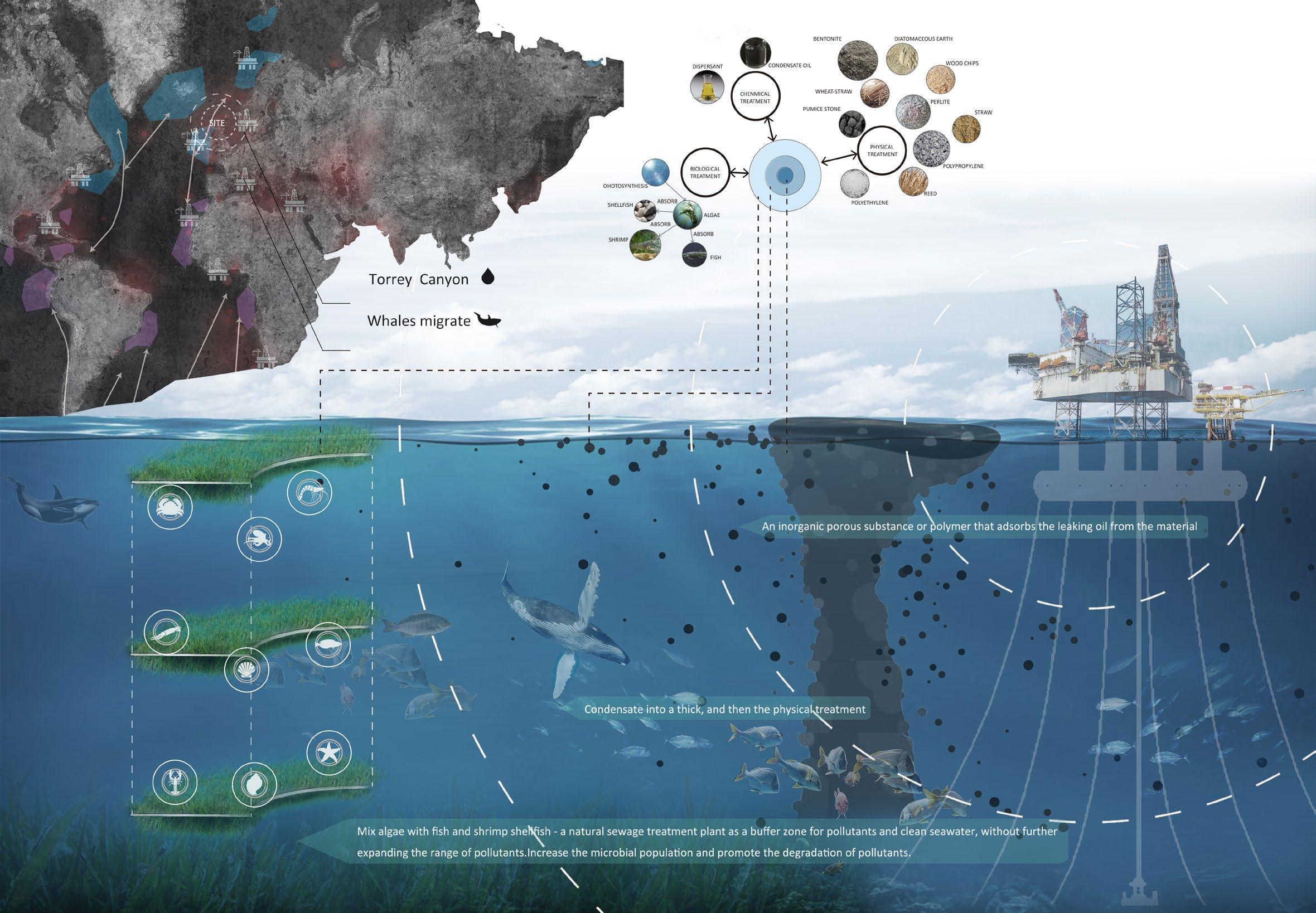 In March 1967, the Torrey Canyon ship ran aground off the coast of southwest England, causing about 120000t of oil spill.
In March 1967, the Torrey Canyon ship ran aground off the coast of southwest England, causing about 120000t of oil spill.
Algal analysis

Algae grows o a rope filled with cement, where algae meet pollutants. Algae cells can purify the water by natural process.
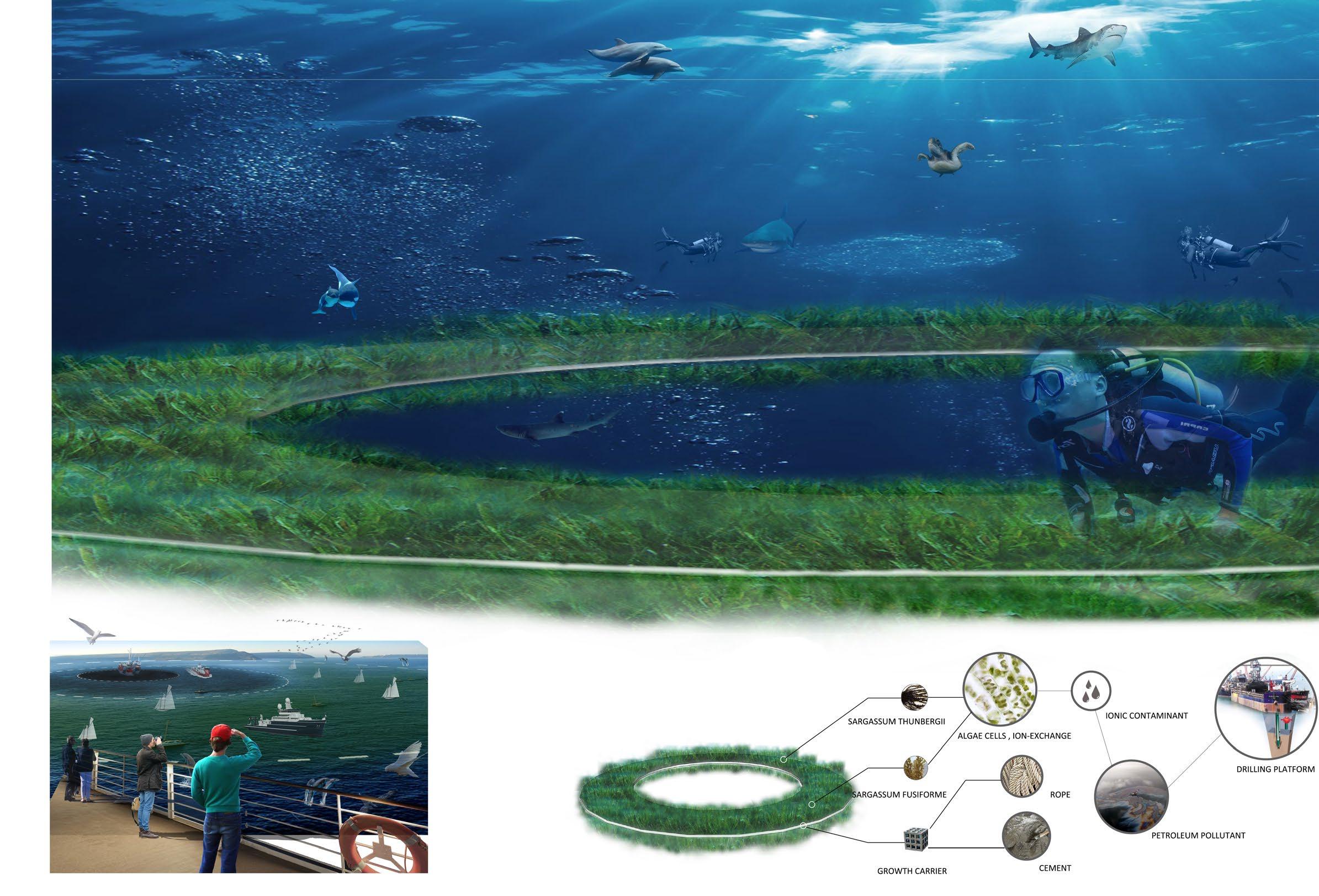

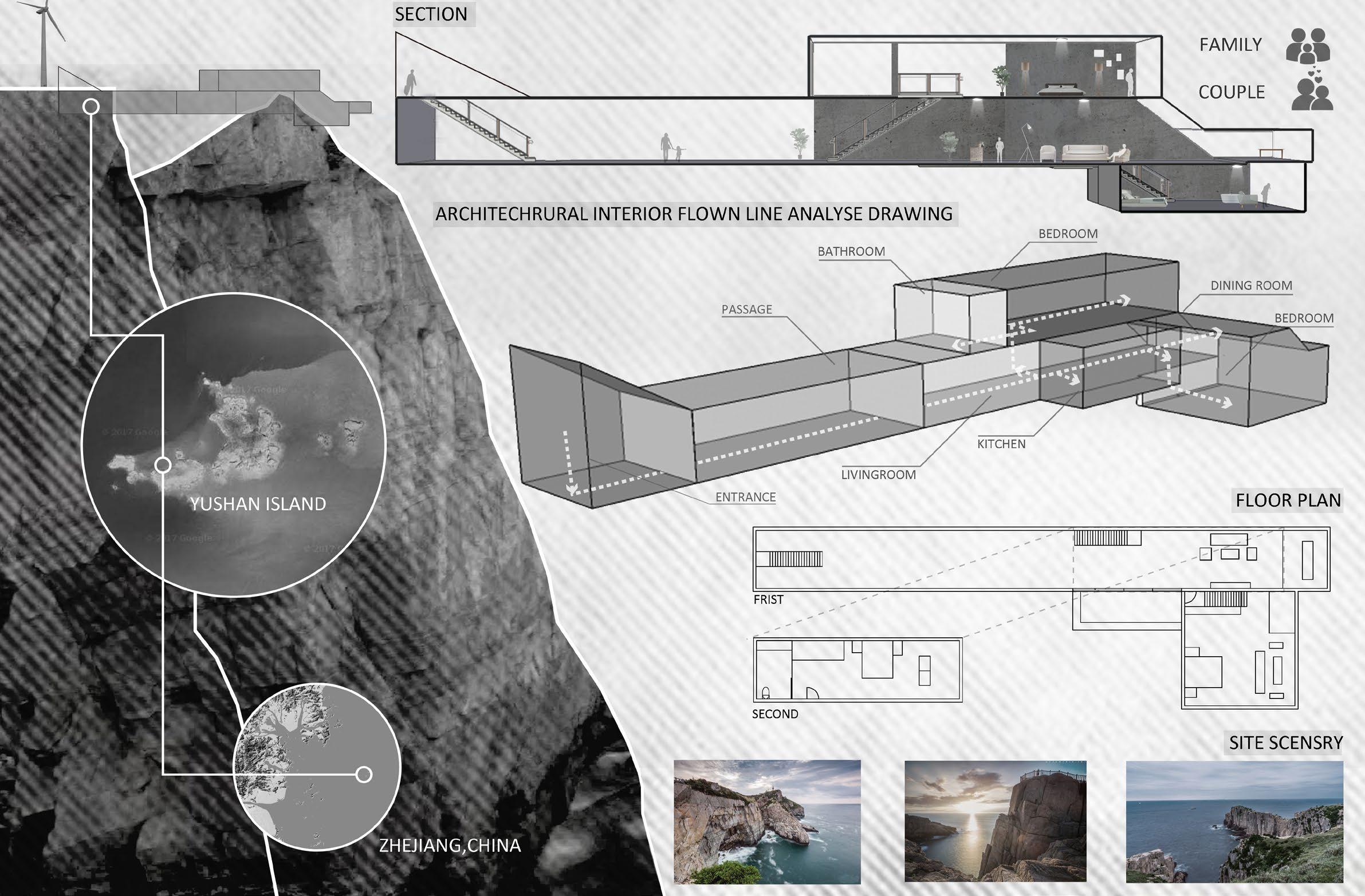
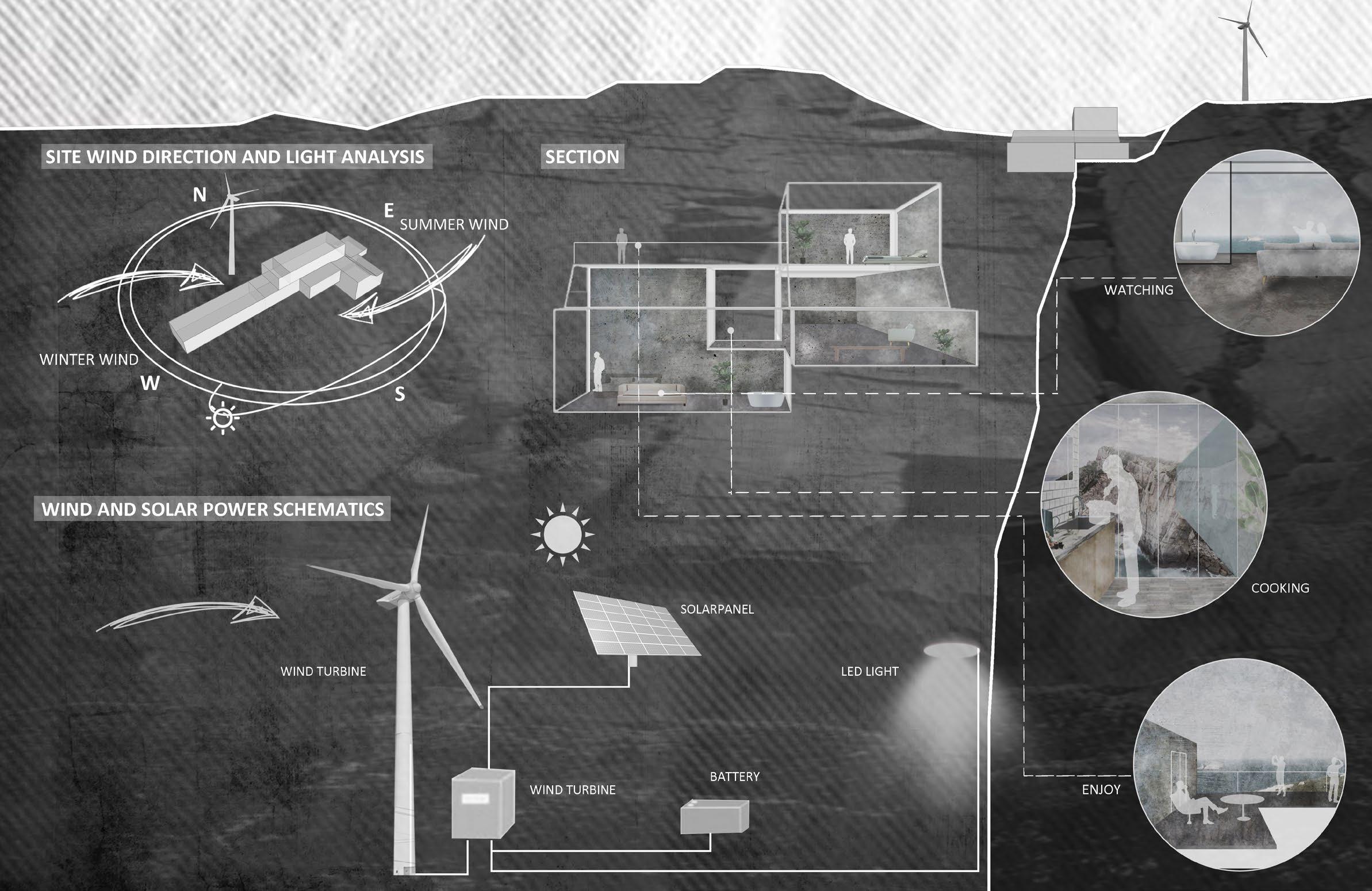
 The main space are bedrooms and the livingroom with great views.
The summer wind comes from the southeast, and the winter wind comes from the northwest. The wind will be used as clear energy in the house.
The main space are bedrooms and the livingroom with great views.
The summer wind comes from the southeast, and the winter wind comes from the northwest. The wind will be used as clear energy in the house.

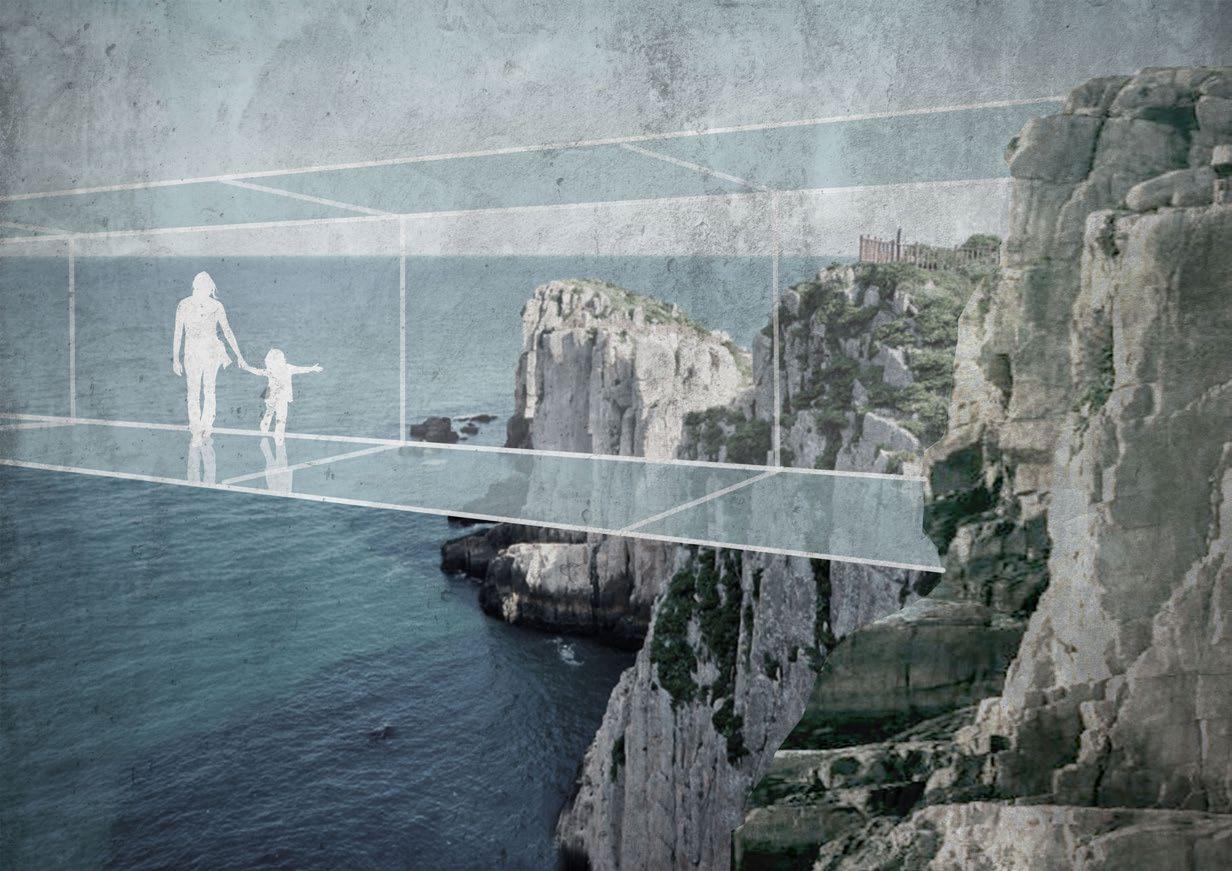
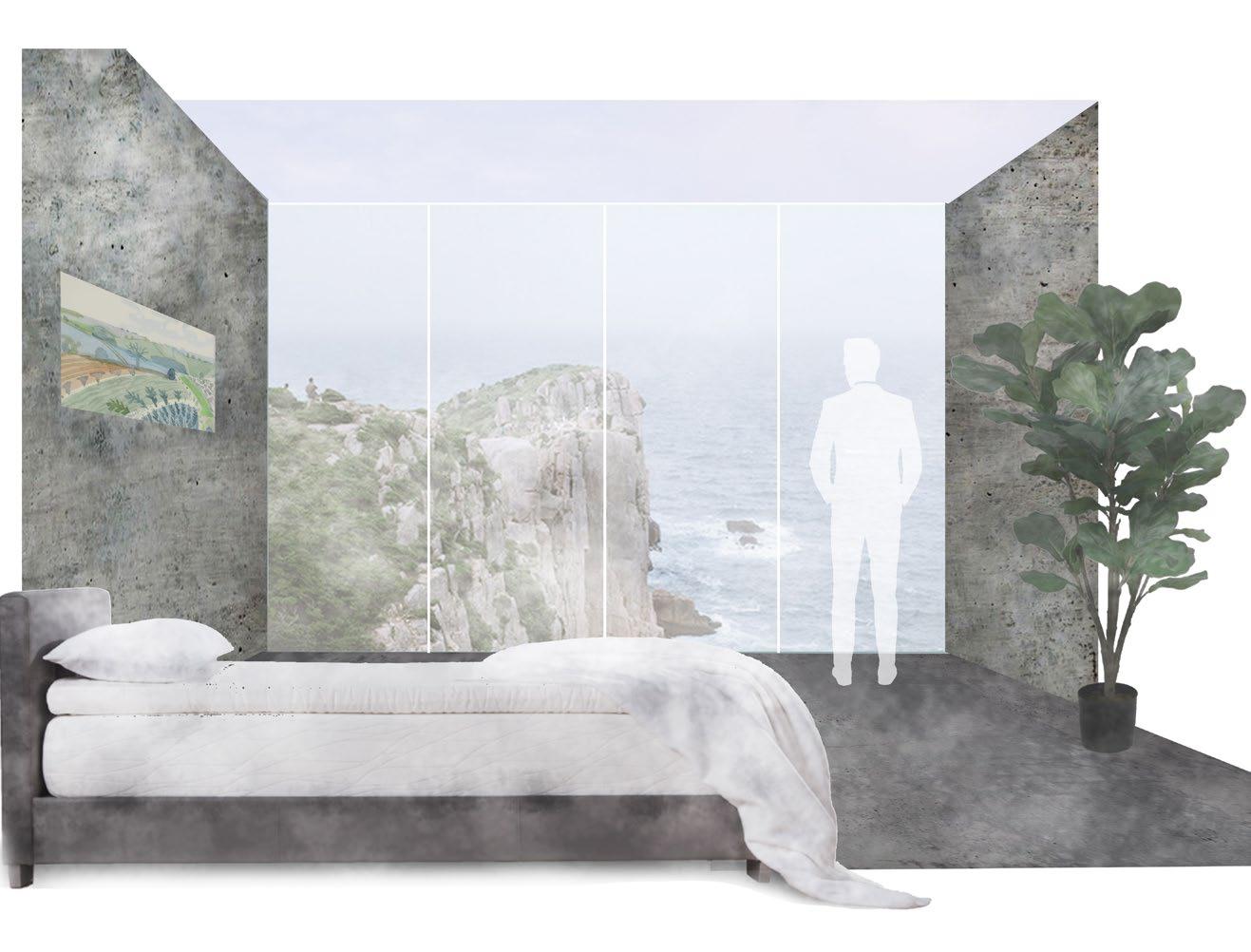
Package ,business cards and posters design




Painted performance techniques
Interior design

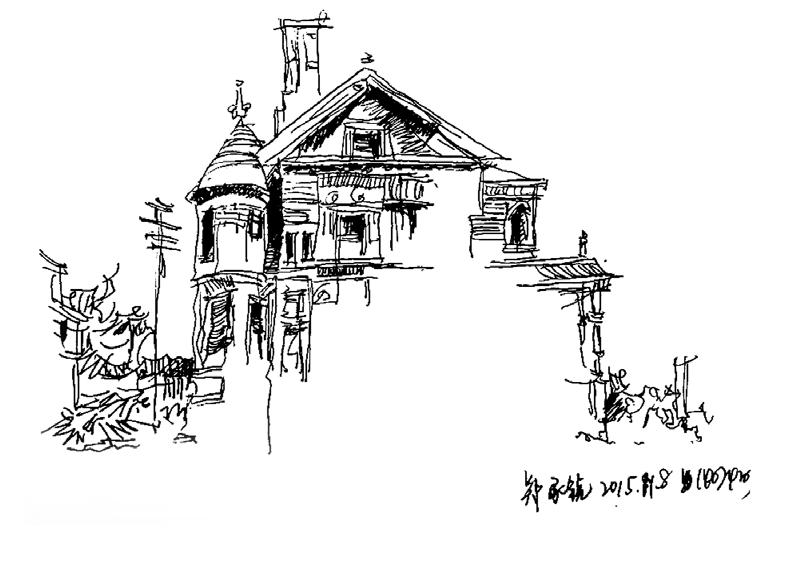
This project is a hotel design with traditional Chinese characters. Traditional materials are used to work with metals by new technology, such as woods and stones are used to form the dinning area and the corridor. Funitures are made of woods and stainless steels in modern stlye.
